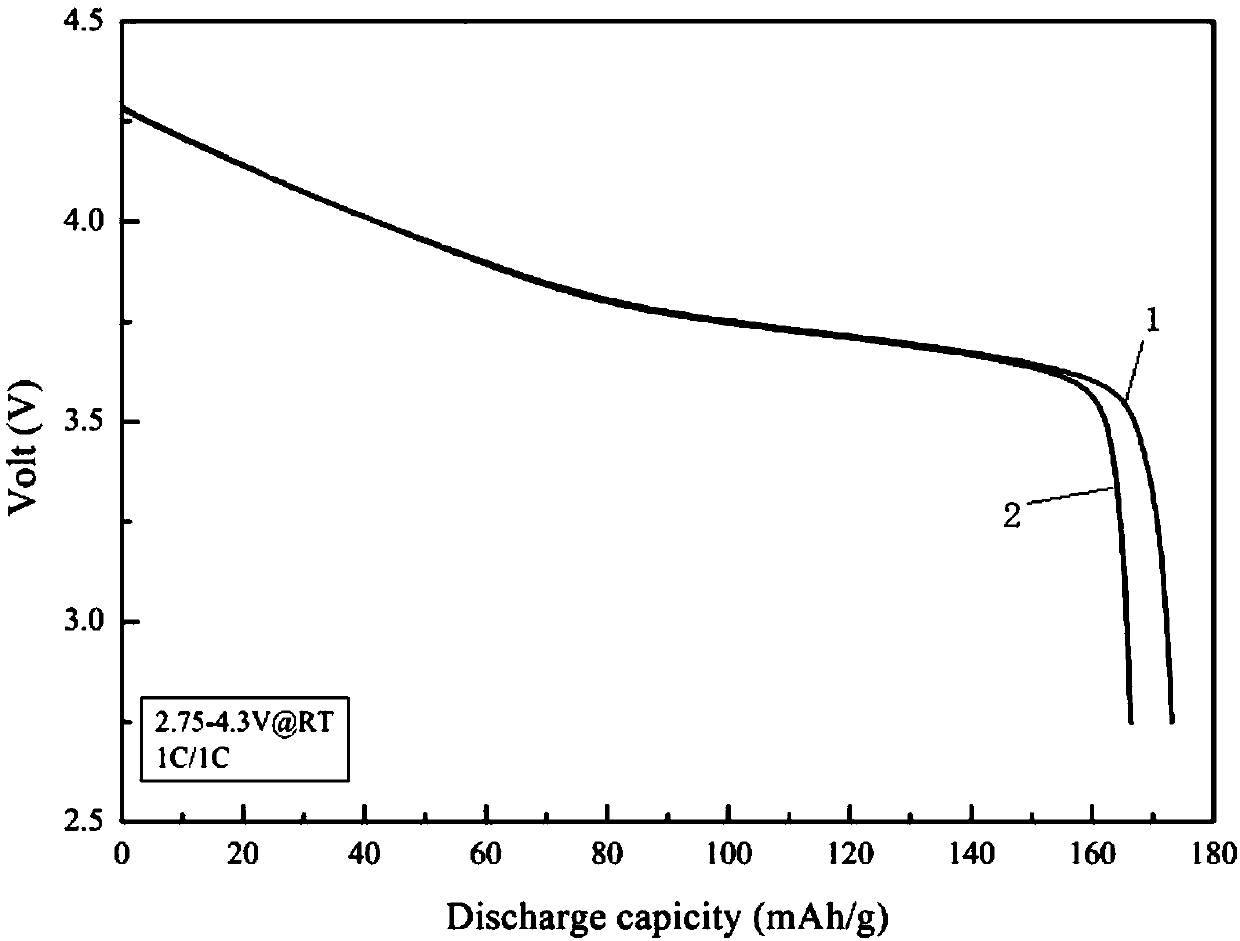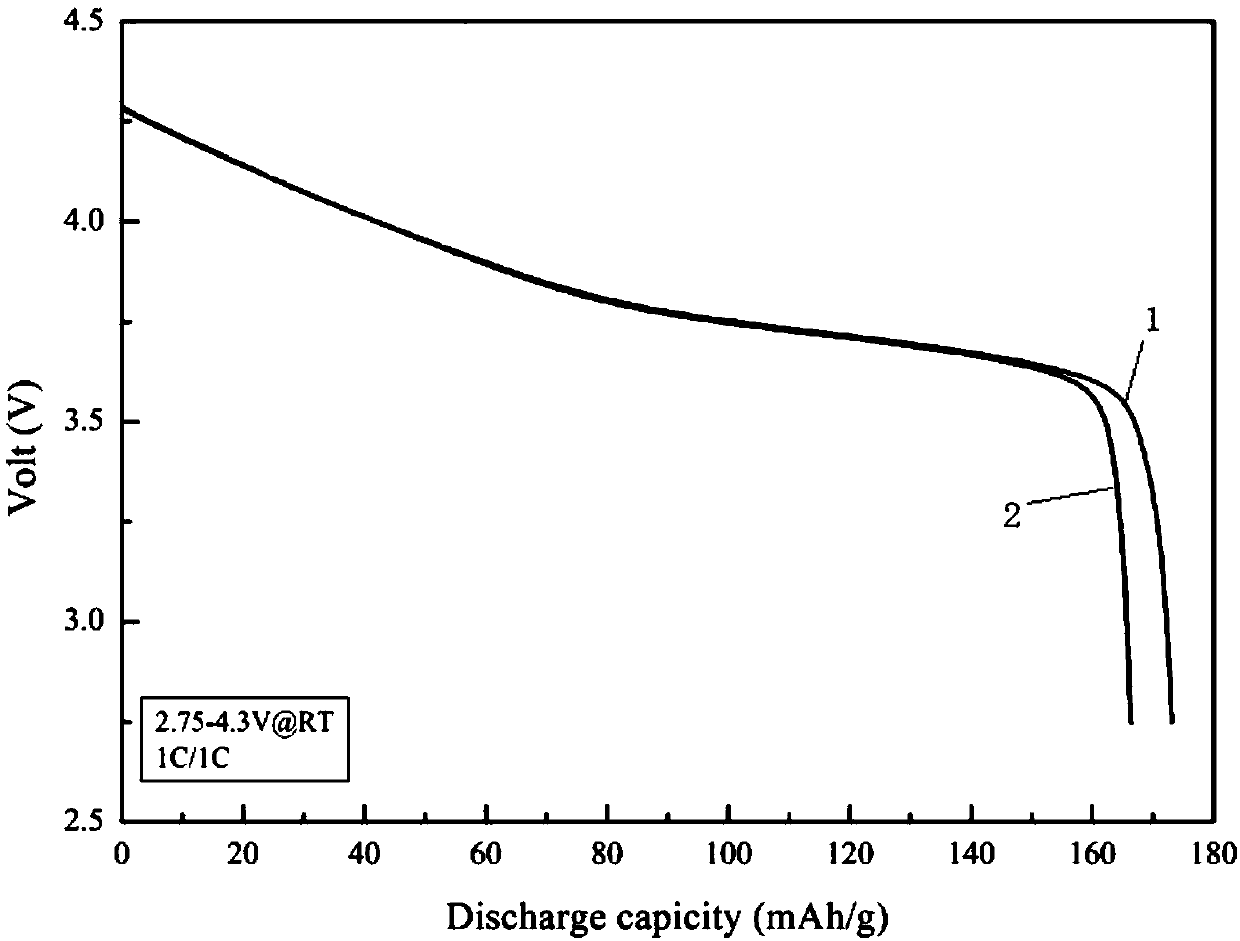Gradient type monocrystal-like positive electrode material and preparation method thereof
A positive electrode material and gradient technology, which is applied in the field of gradient type single-crystal-like positive electrode materials and their preparation, can solve the disadvantages of single-crystal ternary materials and other problems, and achieve stable results, easy industrialization, and high electrical conductivity.
- Summary
- Abstract
- Description
- Claims
- Application Information
AI Technical Summary
Problems solved by technology
Method used
Image
Examples
Embodiment 1
[0041] An embodiment of the present invention provides a gradient-type single-crystal-like positive electrode material whose general chemical formula is Li 1.04 Ni 0.6 co 0.2 mn 0.21 Si 0.01 o 2.04 .
[0042] Its preparation method is implemented through the following steps:
[0043] Step 1, using the co-precipitation method to prepare the gradient ternary precursor Ni 0.6 co 0.2 mn 0.2 (OH) 2 ;
[0044] Step 1.1, add ultrapure water into the reaction kettle and stir for 1-2 hours, then add ammonia water with a mass concentration of 10-20%, control the concentration of ammonia water at 0.5-1.0mol / L, and pass in argon protection to control the reaction kettle The temperature inside is raised to 50-100°C, then sequentially add nickel-cobalt-manganese salt mixed solution and 3-6mol / L sodium hydroxide solution into the reaction kettle, stir until the pH value is 11-13, and obtain a mixed solution ;
[0045] Wherein, the molar ratio of nickel, cobalt, and manganese salt...
Embodiment 2
[0056] An embodiment of the present invention provides a gradient-type single-crystal-like positive electrode material whose general chemical formula is Li 1.08 Ni 0.6 co 0.2 mn 0.22 Si 0.02 o 2.08 .
[0057] Its preparation method is implemented through the following steps:
[0058] Step 1, using the co-precipitation method to prepare the gradient ternary precursor Ni 0.6 co 0.2 mn 0.2 (OH) 2 ;
[0059] Step 1.1, add ultrapure water into the reaction kettle and stir for 1-2 hours, then add ammonia water with a mass concentration of 10-20%, control the concentration of ammonia water at 0.5-1.0mol / L, and pass in argon protection to control the reaction kettle The temperature inside is raised to 50-100°C, then sequentially add nickel-cobalt-manganese salt mixed solution and 3-6mol / L sodium hydroxide solution into the reaction kettle, stir until the pH value is 11-13, and obtain a mixed solution ;
[0060] Wherein, the molar ratio of nickel, cobalt, and manganese salt...
Embodiment 3
[0071] An embodiment of the present invention provides a gradient-type single-crystal-like positive electrode material whose general chemical formula is Li 1.12 Ni 0.6 co 0.2 mn 0.23 Si 0.03 o 2.12 .
[0072] Its preparation method is implemented through the following steps:
[0073] Step 1, using the co-precipitation method to prepare the gradient ternary precursor Ni 0.6 co 0.2 mn 0.2 (OH) 2 ;
[0074] Step 1.1, add ultrapure water into the reaction kettle and stir for 1-2 hours, then add ammonia water with a mass concentration of 10-20%, control the concentration of ammonia water at 0.5-1.0mol / L, and pass in argon protection to control the reaction kettle The temperature inside is raised to 50-100°C, then sequentially add nickel-cobalt-manganese salt mixed solution and 3-6mol / L sodium hydroxide solution into the reaction kettle, stir until the pH value is 11-13, and obtain a mixed solution ;
[0075] Wherein, the molar ratio of nickel, cobalt, and manganese salt...
PUM
| Property | Measurement | Unit |
|---|---|---|
| Particle size | aaaaa | aaaaa |
Abstract
Description
Claims
Application Information
 Login to View More
Login to View More - Generate Ideas
- Intellectual Property
- Life Sciences
- Materials
- Tech Scout
- Unparalleled Data Quality
- Higher Quality Content
- 60% Fewer Hallucinations
Browse by: Latest US Patents, China's latest patents, Technical Efficacy Thesaurus, Application Domain, Technology Topic, Popular Technical Reports.
© 2025 PatSnap. All rights reserved.Legal|Privacy policy|Modern Slavery Act Transparency Statement|Sitemap|About US| Contact US: help@patsnap.com


